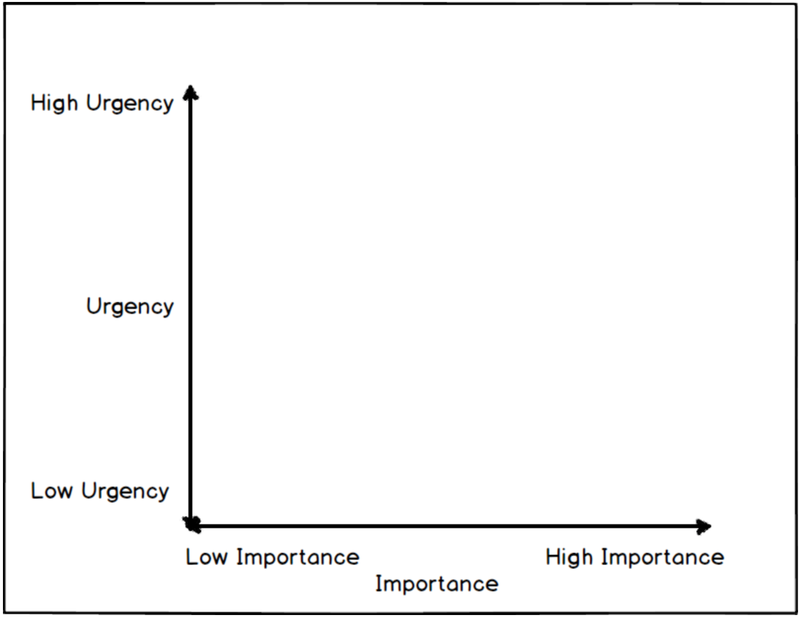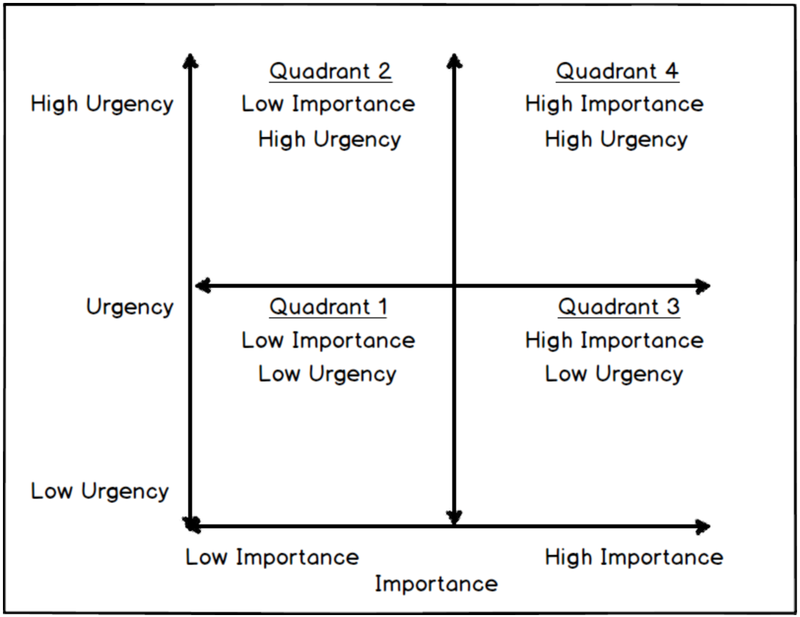
Clients and colleagues often ask Greg Randall how he is able to lead and manage a high volume of highly complex client projects.
Managing a high volume of projects is not hard. What IS hard is leading and managing a high volume of projects where the conduct of all activities is to a high standard.
There is no point in juggling projects if the standard of work decreases as the project count increases.
This is an industry-wide issue:
In the Digital/eCommerce business community globally, it is common to find a correlation where, as client volume increases the standard of work decreases. The reasons for this is, for agencies to be successful in this space, the skills required of employees is “T-shaped” in nature.
The “T” is a metaphor representing the depth and breadth of what is required of an employee. He/she needs deep skills in one specific discipline (the vertical bar of the “T”), and also have an appreciation and the ability to collaborate on other areas (the horizontal bar of the “T”).
In concept it appears simple, acquire new business, then hire new “T” shaped employees. In practice, it’s difficult to find quality "T" shaped people, more importantly, it's difficult to retain these people.
This is one of the most common juggling acts digital agencies face that clients never know about.
Learn from someone who has been there:
At one point Greg’s Digital/eCommerce agency was the fastest growing of its kind in Australia and New Zealand. Greg achieved this with a relatively low headcount (25 employees) which did not grow as large clients came onboard.
The “secret sauce” to Greg’s success was finding the “T” shaped superstars, and focussed their training on gaining proficiency in time management. The reasons and benefits of this approach are made clearer as you read on.
In this space, the many employees are young and only know their deep digital/technical skillset. They lack an understanding and appreciation of management disciplines to enable them to leverage what they know and what they can do.
As a result, their skills are wasted, they become frustrated and leave thinking the next agency role will be different. Unfortunately, for them it's not.
Working alongside digital agencies around the world, there remains an absence (and in some instances a complete absence) of strong time management disciplines of both management and employees.
It was Greg's passion to give his teams the time management tools necessary to handle considerable workloads and pressure with ease.
Defining Time Management:
The process of organising and planning how to divide your time between specific activities. Good time management enables you to work smarter – not harder – so that you get more done in less time, even when time is tight and pressures are high. Failing to manage your time damages your effectiveness and causes stress.
The benefits to getting this right both for the employee and the business is substantial:
- Less stress means happier employees who enjoy their job (less employee churn)
- Greater opportunities for both the business and employee
- Higher standard of work output by the employee
- Improved relationship with client*
- Improved reputation in the industry

*Point 4 is important to call out. If your time management skills improve, your client management and the standard of client management also improves. This is relevant because agencies continue to recruit “Account Managers” who are poor at time management.
How did Greg Randall develop his expertise in time management?
Firstly, Greg Randall has personally lead and managed hundreds of client projects from strategy creation, to design-build, to working with the client to grow the channel once it was operational. This 15 years of “doing” helped hone Greg’s time management skills.
When Greg owned and operated his eCommerce/Digital agency, it was normal for him to be leading and managing between 35 to 50 complex projects at various stages of work in progress. And he maintained this workload for 8 years.
Secondly, Greg Randall was coached and mentored by the top management consultants in this part of the world. With this connection, Greg was taught the science of time management which to this day, he still practices.
The remainder of this article talks to the science of time management, how it can be leveraged and how it specifically relates to Digital/eCommerce agencies.
These lessons learned also apply to all business models and can impact people in their own personal development.
The Science of Time Management – using the “Importance-Urgent Matrix”
The foundation of time management comes in the form of a matrix where “Importance” sits on one axis and “Urgency” sits on the other. This is also referred to as the “Eisenhower Decision Matrix”. This same principle guided Eisenhower’s successful career as a general and president of the US.
“What is important is seldom urgent and what is urgent is seldom important”
Stephen Covey made the Eisenhower Decision Matrix popular in his critically acclaimed book titled, “The 7 habits of highly effective people”, which sold over 15 million copies.
Recognized as one of Time magazine’s 25 most influential Americans, Stephen R. Covey was one of the world’s foremost leadership authorities, organizational experts, and thought leaders.
This matrix plays a part in each of the 7 habits Covey calls out in his book.
Importance and Urgency sit on an axis as shown in Figure 1 below:

Figure 1
In Figure 1 both the “Urgency” and “Importance” axis starts from low and moves gradually to high.
Defining “Urgent” tasks:
- A task requiring immediate attention
- These tasks put employees and businesses in reactive mode
- Characteristics of these tasks: defensive, negative, hurried, and narrowly focused mindset
- Usually associated with achieving someone else’s goals
Defining “Important” tasks:
- Tasks residing with-in an employees job description
- Contribute to a business’s long-term mission, values, and goals
- When employees are working important tasks, they are in proactive mode
- Employees carrying out important tasks are calm, rational, and are open to new business opportunities
From here four quadrants are created forming the “Important-Urgent Matrix”. See Figure 2 below:

Figure 2
The quadrants represented in Figure 2 are…
- Quadrant 1 – Low Importance, Low Urgency
- Quadrant 2 – Low Importance, High Urgency
- Quadrant 3 – High Importance, Low Urgency
- Quadrant 4 – High Importance, High Urgency
There are unique dynamics within each quadrant influencing the science of time management.
Quadrant 1 – Low Importance, Low Urgency:
Any tasks appearing on your desk having low importance and is not urgent should be ignored and discarded. Tasks that appear in this quadrant are referred to as “noise” or distractions.
In the context of personal development, a key part of goal-setting and remaining focused on the right activities required is being able to recognise and avoid the “noise” that takes you away from what’s important.
Quadrant 2 – Low Importance, High Urgency:
This quadrant is where external influencers play a big role and can do a lot of harm to both an individual and the business.
This is where employees are essentially completing the tasks (goals) of others and keeping them away from their own priorities.
Covey states people spend most of their time within this quadrant dealing with the priorities of others and as a result, doing nothing important. The bigger issue is these people think they are working on things of high importance (Quadrants 3 and 4, see Figure 2).
The well-known term “Nice guys finish last”, comes from the behaviour of people who permanently reside within Quadrant 2.
These are the people who say “Yes” to the majority of requests that are asked of him/her, occupying their time, ultimately making them ineffective in the eyes of the business.
Their inability to say “No” becomes their undoing, putting their own priorities on pause until they have dealt with the priorities of others.
Are you this person?
Consider two scenarios:
Scenario 1:
An employee comes to you in a panic because they have not done something they were supposed to and is now about to miss an important deadline. This individual makes all kinds of noise in the office, blaming everyone and everything other than him/herself. Then they come to you for help? What do you do?
Scenario 2:
Imagine a second scenario where a client was meant to deliver a piece of work to a deadline to ensure a project retains forward momentum. On the eve of missing the deadline, this client turns to you for help? What do you do?
If you decide to help without pause in either of the above scenario’s you are being dragged into Quadrant 2.
Why is this a problem?
The business has defined what’s important in your job description (Quadrants 3 and 4). As a result of you spending time fulfilling tasks that are important to others, you are effectively spending less time on what’s important in your own role, as defined by management. In the eyes of management, you are underperforming.
What can you do?
When either of those scenarios are presented to you in the future, consider this statement….
“Do not let your lack of planning become my problem”
That is essentially what is happening here. The employee or client has a problem that needs to be resolved, and wants to hand it over to you.
While in concept, it’s easy to recommend people to say “NO”, but what happens when clients try to give away their problems?
When the culprit is a client, there are a series of recommended steps you need to undertake:
- Call out the specific activity that was presented to you from the client (their problem they are trying to dump on you).
- Immediately notify management of the situation. Because this is a client, this needs to be managed elegantly in order to preserve the relationship.
- Create a communication plan with management as to how to present this piece of work back to the client.
- Explain to the client this is new work that is out of scope but the business is happy to take it on (assuming it is a service offered by the business).
- Explain the amount of effort and associated costs and ask the client to accept or decline.
If the client declines, they have no choice but to keep the problem and re-allocate resource. It’s fine for the client to decline the offer, but the key point is, you offered to take on their problem but it comes with conditions.
If the client accepts the cost, a new deadline is created for this piece of work (the problem) and it now becomes part of someone’s scheduled workload within the business. It moves from being urgent and not important (Quadrant 2), to important with a sense of urgency depending on the deadline (Quadrant 3 or 4).
This is all part of managing a healthy win-win business-to-business relationship and is a great example of how time management builds a high standard of client management.
Why is this process important?
- If you don’t conduct a process like the one above, the client will do it again.
- If you have a habit of taking on client problems, more clients will do the same to you.
- The ongoing client relationship will degrade in time because the standard of “important” client work will drop (because you are too busy working on other client problems).
Out of all the quadrants, this is the most unpleasant work environment to be in and is a heavy contributor to employee churn.
Quadrant 3 – High Importance, Low Urgency:
All the work that falls within Quadrants three and four are of “high importance” because its job functions that reside within your job description, meaning it’s important for the business.
Employees are brought into a business to support and carry out a role or a series of roles that are deemed important. That is how and why roles are justified. Though employees bring cost, in return for that cost they deliver business value. The role of job descriptions is to ensure everyone remains on task and is delivering the right value.
"Job descriptions assist in making sure staff duties align with company vision"
What makes Quadrant 3 unique is, the work to be completed is of high importance but low in urgency, meaning it is something within the job description that can be planned for completion with a deadline sometime in the future.
Covey states in his book, employees should seek to spend most of their time in Quadrant 3. This also applies for people’s personal lives and is why personal goal setting contributes to long term happiness.
If you don’t have set goals, you won’t know if the personal activities you are doing each day is important or not. As a result, you latch on to whatever stimuli that appears most urgent.
Quadrant 4 – High Importance, High Urgency:
Everything you do in Quadrant 4 should always be the #1 priority in your day. These are activities set out in your job description needing to be dealt with immediately.
These activities could be business threatening situations or they can be activities you planned out (from Quadrant 3) and are now due. Some of the business literature on time management refers to Quadrant 4 activities as being….
“Emergency…life threatening or business threatening situations”
This is not necessarily the case. If you are a “Head of Digital” in charge of a high-performing digital channel and the site goes down, then yes, this is an example of a business threatening scenario.
However, with planning and discipline, employees can reduce the volume of activities needing to be undertaken in Quadrant 4, moving them into Quadrant 3.
A common issue comes in the form of employees struggling to identify what is important, resulting in the inability to effectively apply task prioritization and planning disciplines. This is more common with new employees.
This can be the result of a few things:
- A low standard of employee job description which does not clearly set out defined activities that make up a role
- Poor induction process
- Low standard of job training
To remedy this, go directly to management and have him/her work with you to define what’s important, ultimately refining the job description.
Why is this an important approach?
- Management are those who measures and defines your effectiveness in your role.
- Management defines if you are worthy of a promotion, a pay increase, or remain employed with that business.
- It is the job of management to know what task needs to be prioritised over the others. If they don’t know, how are you to know.
Wrapping Up:
In my 15 years in this space I have seen more Digital/eCommerce agencies fail than succeed. There are, of course, many moving parts needing to come together to build a successful Digital/eCommerce agency.
Consider time management as the glue with an element of elasticity, that holds it all together. As pressures of the agency reaches intermittent peaks, this elasticated glue stretches but holds its bond keeping the agency intact and functional. Though the agency becomes stretched beyond normal limits, it does not break.
This is what time management brings to an organisation and is why its the "secret sauce" building organizational resilience to a Digital/eCommerce agency model that can be brittle if in wrong management hands.
This article was as tagged as B2B , Best Practice , Digital Strategy